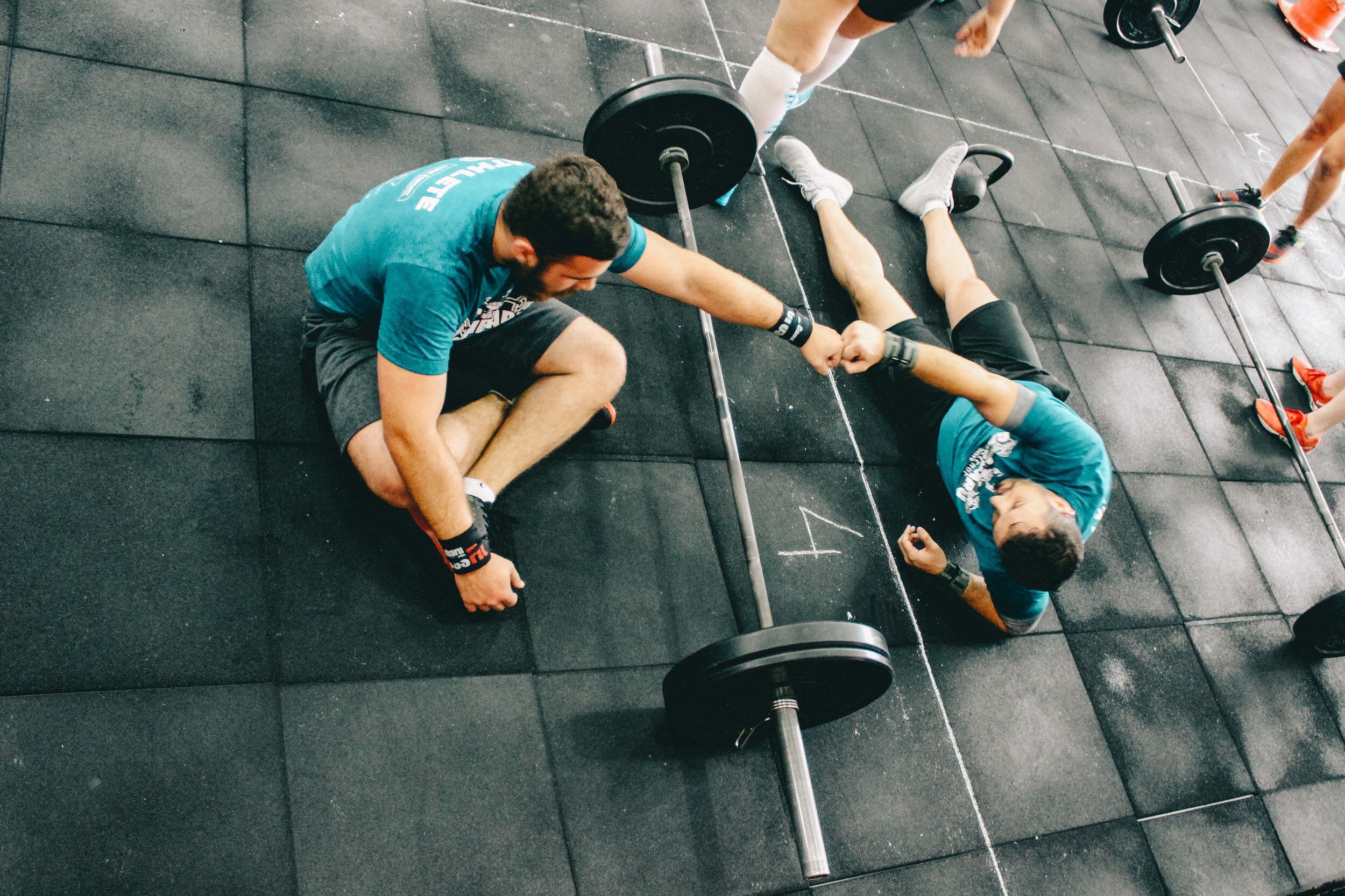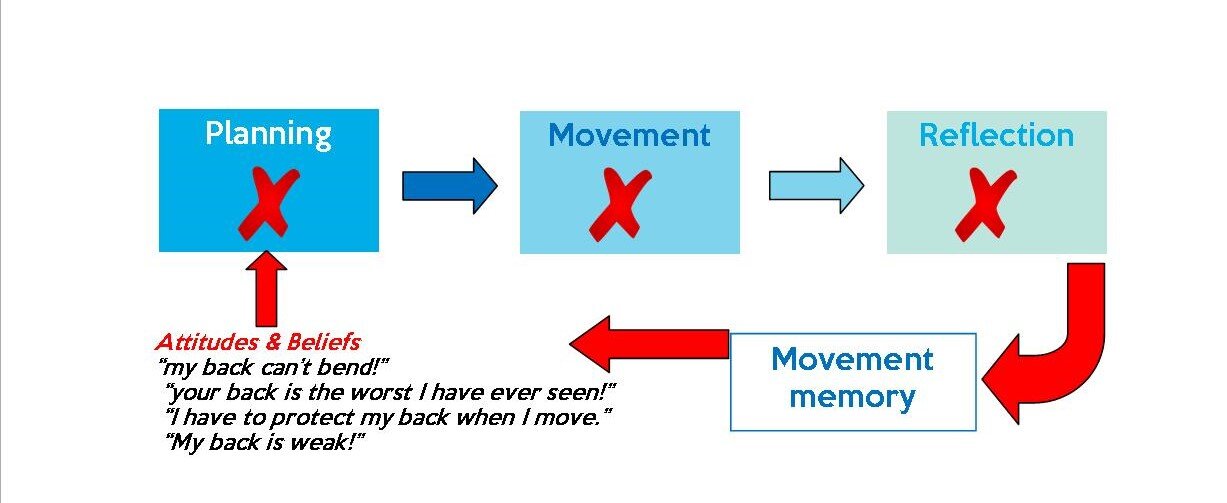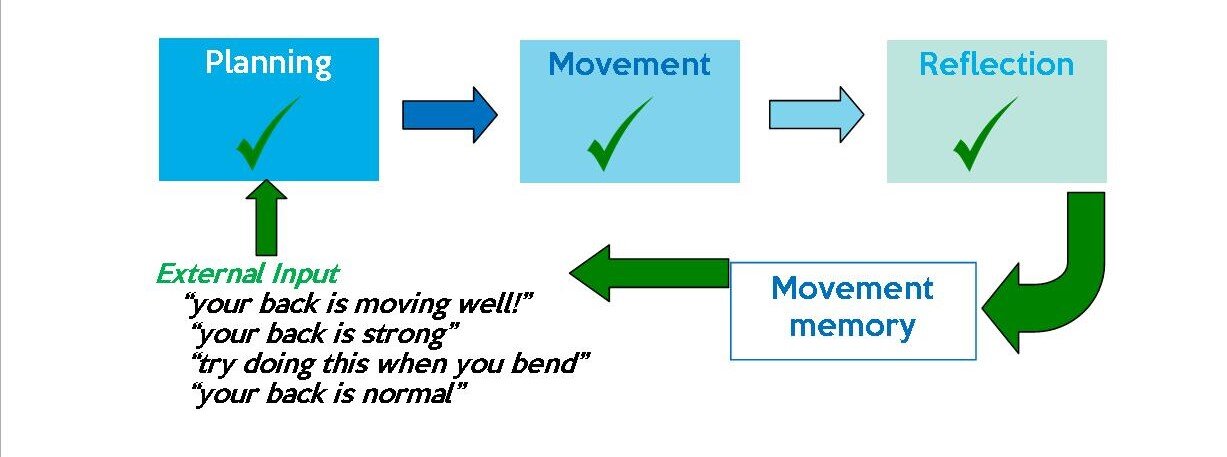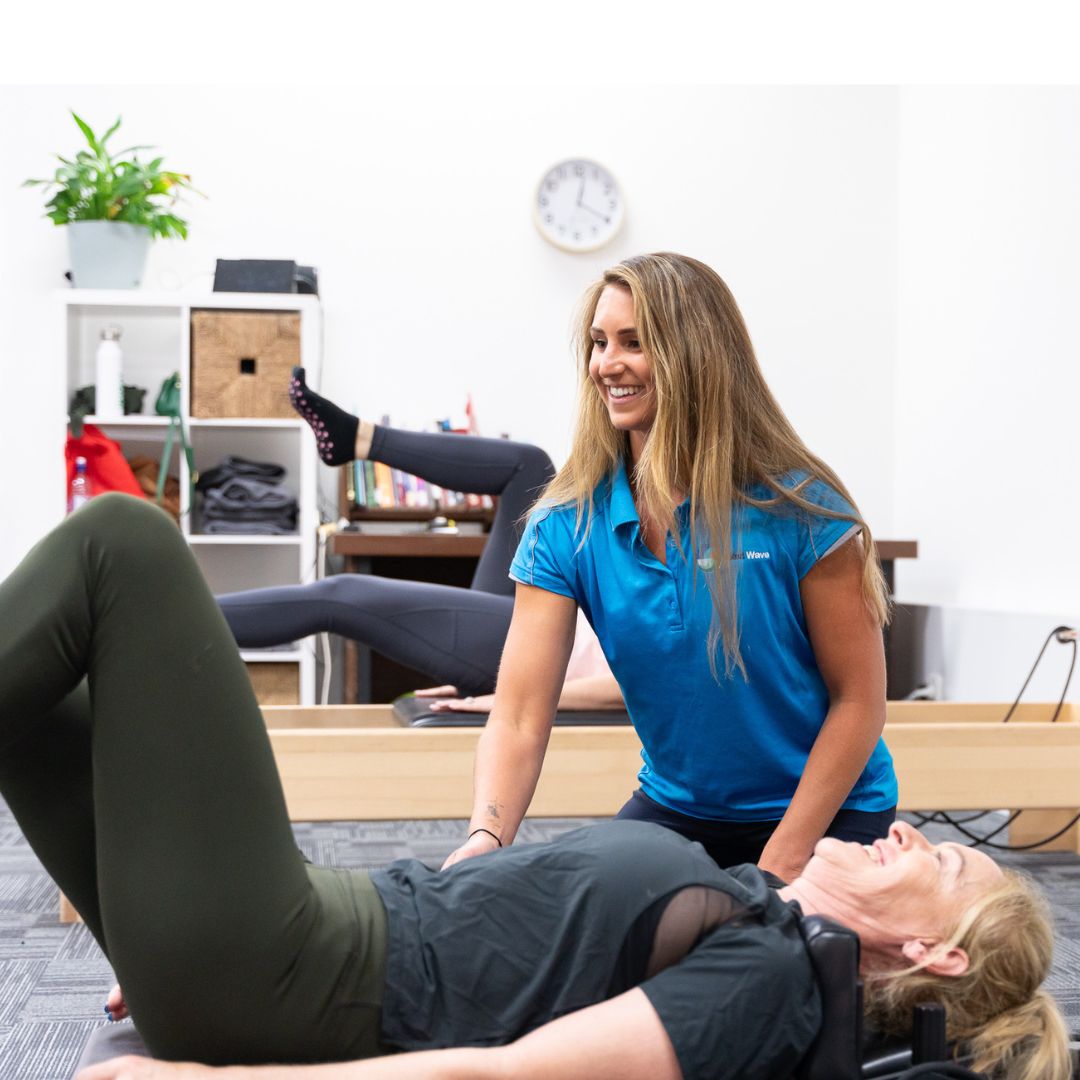Zac Betts, Sports Physiotherapist

Graded Exposure Physiotherapy
Certain movements, for sufferers of persistent pain, cause a threat associated fear response. These movements often tend to be actions or tasks that have resulted in pain frequently when performed. As this result occurs and pain is experienced, fear around the movement is created, and the movement is eventually avoided all together. Depending on the intensity of this fear, sometimes even the thought of completing a certain task can be enough to elicit a pain experience in an individual.
Self efficacy is key for pain free movement
This associated fear of movement is generated through a decline in a person’s self-efficacy. When we refer to self-efficacy regarding movement, we are talking about a person’s belief to complete a certain action or task pain-free. The process by which this self-efficacy either increases or decreases can be illustrated using a series of checkboxes.
The 3 main stages of movement are pre-motor (planning), motor (movement) and reflection.
To determine the likelihood of an individual completing a task or action. The brain is constantly monitoring the status of the body during the stages of movement.
If all 3 checkboxes receive ticks, the movement will occur pain-free, and self-efficacy towards this movement will improve. If, however, just one box receives a cross, then it is likely that the movement will result in pain and the self-efficacy towards this movement will decrease.
Below, I will illustrate 2 examples of this movement checkbox cycle being completed. The first will be in a painful movement where self-efficacy will decrease. And the second will be in a pain-free movement where self-efficacy increases. For both examples we will use the task of bending forward to touch your toes whilst standing.
Painful movement decreases self efficacy
In the above example we see the hidden factors which influence this movement analysis cycle. An individual’s attitudes, beliefs and past movement memories all contribute to this feedback loop.
In the example, the individual has all of these thoughts about their body and their movement. This dictates the result of the first checkbox. When the person decides that “my back must be protected”, “my back can’t bend”, etc. The brain’s imagining of movement is already creating fear and perceived threat around the movement (thus the cross in the pre-motor checkbox).
This ‘imagined movement’ (planning) causes bracing and altered movement patterns during the motor stage of movement. These altered movement patterns will undoubtedly result in an uncomfortable movement. The brain, already receptive to feeling threatened, will classify this discomfort in movement as threatening (producing a cross in the motor checkbox).
Reflection, as the final stage, is where a person’s brain looks back on the previous movement event. If the movement was deemed threatening (like in this example and pain was produced), the brain will generate a movement memory which tags the movement as threatening. This feeds back into negative attitudes and beliefs an individual may have around their body and movement. When this occurs, self-efficacy is decreased, and threat associated fear around the movement is increased.
Pain free movement increases self efficacy
In the above diagram we see the individual receives a large amount of ‘positive’ external input. This input fights against any ingrained ‘negative’ attitudes and beliefs, setting up a positive movement imagery.
When the individual is helped to believe that they can complete the task or action without pain, it sets the stage for success in the pre-motor stage (this creates the tick in the first checkbox). When a person believes they will complete the action without pain, it allows the body to adopt normal movement patterns (this can also be prompted and guided by a therapist).
A normal movement pattern reduces discomfort in movement, decreasing the perception of threat in a movement (creating the tick in the second checkbox). The brain will again then reflect on the movement. With the previous two checkboxes ticked, the brain will agree that the movement is not threatening and will generate a positive movement memory.
Once the action has been completed enough times pain-free, the quantity of positive movement memories will reshape the attitudes and beliefs a person will have towards their body. This is when self-efficacy towards a movement will increase and threat associated fear will decrease.
Physiotherapy creates pain free movement
As part of effective therapy, we must improve an individual’s self-efficacy for movement to remove this threat associated fear. Sometimes, if a movement has been avoided for a long time, it can be a little hard to figure out where to start with this.
A good example of this would be a person that previously hurt their back lifting a 10kg plant. Upon the individual trying to lift the plant again, a pain response occurred yet again. Over time, the person avoids lifting this weight. Eventually they avoid lifting all together as their self-efficacy towards lifting has declined greatly. To reduce the threat associated fear linked to this movement, we must break the task down into more digestible chunks. This is known as graded exposure.
Break tasks down into smaller movements
When looking at the task of lifting a 10kg plant from the ground there are a few key movements involved: bending the legs, bending the back, pushing up to straight with the legs, and extending the back to straight.
Depending on how much associated fear there is, sometimes these components of movement themselves are enough to trigger a pain response. In these cases, we must initially work through each individual movement in isolation to ensure they can occur pain-free.
Once each movement can be done in isolation, we would progress to completing the task of lifting using an imaginary weight. Then once that is completed, we would use a small weight. Once self-efficacy improved on a small weight… a medium weight would be used. Once the individual is happy with the medium weight an actual 10kg weight would be used.
Initially we would complete this with an easy to hold weight in a controlled, safe environment. After this can be completed, we would progress to completing the actual task of lifting a 10kg plant from the floor.
By going through this graded exposure approach to re-training movement and improving self-efficacy. We can reduce threat associated fear and get people back to completing tasks they want to complete.
Written by Zac Betts Sports Physiotherapist Next Wave Therapy









